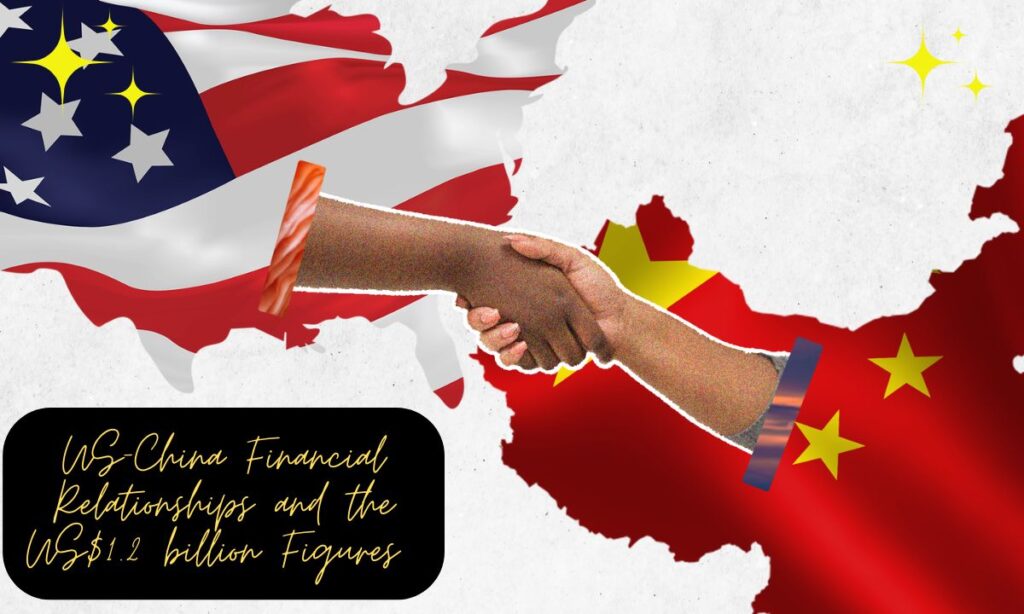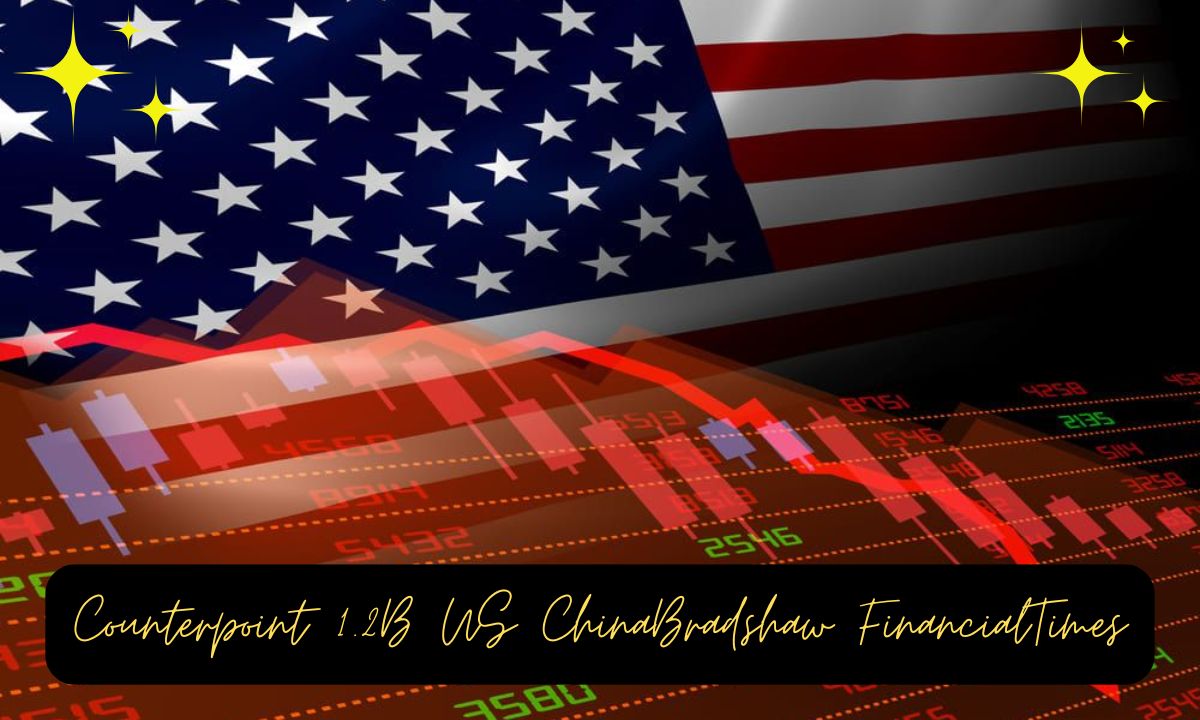In the complex realm of global finance, the Counterpoint 1.2B US China Bradshaw Financial Times transaction represents a critical moment of economic interaction between the United States and China.
This $1.2 billion exchange, meticulously reported by Financial Times and linked to Bradshaw, encapsulates the intricate dance of international trade, strategic investments, and geopolitical maneuvering.
The transaction serves as a powerful testament to the evolving economic relationship between two global superpowers, offering unprecedented insights into the sophisticated mechanisms of modern international financial diplomacy.
What is Counterpoint 1.2B US ChinaBradshaw FinancialTimes?
The Counterpoint 1.2B represents a significant $1.2 billion financial transaction between the United States and China, capturing the attention of global economic analysts.
This landmark deal, highlighted by Financial Times reporter Bradshaw, symbolizes the complex economic interactions between two global superpowers.
The transaction encompasses various potential scenarios, including trade agreements, technology investments, or strategic financial exchanges.
Its multifaceted nature reflects the intricate economic relationship between the US and China, demonstrating the nuanced approach to international financial diplomacy.
The figure serves as a critical indicator of the evolving economic landscape and the strategic considerations underlying major international transactions.
Breaking Down the Components
The analysis dissects this crucial economic relationship into several interconnected components:
| Component | Percentage | Focus Area | Key Trends |
| Direct Investment | 35% | Technology and Manufacturing | Rising tech sector focus |
| Trade Flow | 40% | Consumer Goods and Services | Supply chain diversification |
| Financial Services | 15% | Banking and Insurance | Digital payment integration |
| Other Sectors | 10% | Infrastructure and Real Estate | Sustainable development |
US-China Financial Relationships and the US$1.2 billion Figures
The US-China financial relationship represents a delicate balance of cooperation and competition, with the $1.2 billion transaction serving as a pivotal moment in their economic interactions.
Historical context reveals a complex dance of trade deals, investments, and strategic economic maneuvers between these two global economic giants.

The financial figures highlight the deep interconnectedness of their economies, showcasing both the potential for collaboration and the underlying tensions.
Each transaction carries significant weight, influencing global market dynamics and international economic strategies. The $1.2 billion exchange demonstrates the sophisticated approach both nations take in managing their intricate financial relationship.
Understanding the Counterpoint 1.2B Transaction
The Counterpoint 1.2B US ChinaBradshaw FinancialTimes represents a pivotal moment in international financial diplomacy.
This extraordinary transaction highlights the complex nature of US-China financial relations. The $1.2 billion figure captures the intricate economic dance between two global superpowers.
Financial experts view this transaction as more than just a monetary exchange. It symbolizes the strategic investments that define modern international economics.
The deal showcases the economic interdependence between the United States and China, demonstrating how deeply interconnected these economies have become.
Unpacking the Financial Dynamics
The transaction reveals critical insights into bilateral economic strategies. Both nations carefully navigate the delicate balance of geopolitical dynamics.
Each financial move represents a calculated step in their complex relationship. The $1.2 billion figure is not merely a number but a testament to their sophisticated economic engagement.
International trade plays a crucial role in this narrative.
The transaction reflects the nuanced approach both countries take towards economic collaboration. Financial Times reporter Bradshaw has meticulously documented the intricate details of this significant exchange.
Global Market Implications
Market interactions triggered by this transaction extend far beyond bilateral interests. The global market influence of such a substantial financial move cannot be understated. Every sector feels the ripple effects of this economic interaction.

Technology, manufacturing, and consumer goods sectors experience immediate impacts. The semiconductor industry, in particular, stands at the forefront of these transformative economic negotiations.
China’s mass production capabilities combined with US technological innovations create a powerful economic ecosystem.
Political Ramifications and Strategic Significance
Financial diplomacy emerges as a critical tool in modern international relations. The transaction represents more than a monetary exchange; it’s a strategic communication between two global powers.
READ THIS BLOG: Exploring the Life of Andrew Shingange: Trevor Noah’s Brother and an Advocate for Change
Geopolitical tensions find resolution through carefully structured financial agreements. Diplomatic considerations play a fundamental role in such transactions.
The negotiations involve intricate discussions about tariffs, investments, and long-term economic collaboration. Each clause represents a carefully considered step in maintaining global economic stability.
Navigating Economic Uncertainties
Market volatility remains a constant challenge in international finance. The Counterpoint 1.2B transaction demonstrates a sophisticated approach to managing economic uncertainties.
Both nations showcase their ability to find common ground despite existing tensions. Strategic investments become a mechanism for building trust.
Trade negotiations transform from confrontational encounters to collaborative opportunities. The financial landscape continues to evolve, with each transaction writing a new chapter in international economic relations.
Impact on Global Economic Ecosystem
The transaction’s significance extends beyond immediate financial gains. It represents a bilateral engagement that could reshape future economic interactions. Investors, policymakers, and economic experts closely analyze every aspect of this deal.
Economic cooperation emerges as the primary takeaway from this remarkable transaction. The ability of two seemingly competitive nations to find mutual economic ground provides hope for future international collaborations.
Frequently Asked Questions
What Makes the Counterpoint 1.2B Transaction Unique?
The transaction represents a sophisticated approach to international financial negotiations, showcasing the complex economic relationship between the US and China.
How Does This Transaction Influence Global Markets?
It creates potential opportunities for investment, technology transfer, and economic collaboration across multiple international sectors.
What Are the Potential Risks Involved?
The transaction carries inherent risks related to geopolitical tensions, market fluctuations, and potential regulatory challenges.
How Will This Impact Future US-China Relations?
The transaction potentially provides a framework for improved economic dialogue and strategic cooperation between the two nations.
What Sectors Are Most Likely to Benefit?
Technology, semiconductor manufacturing, and international trade sectors stand to gain the most from this strategic financial move.
Conclusion
The Counterpoint 1.2B US ChinaBradshaw FinancialTimes transaction represents a remarkable moment in international economic history. It demonstrates the potential for economic cooperation in an increasingly complex global landscape. Financial experts will continue to study this transaction as a critical case study in modern international finance.
The $1.2 billion exchange symbolizes hope, strategy, and the potential for collaborative economic growth. As global dynamics continue to evolve, such transactions will play an increasingly important role in shaping international economic relationships.
Both the United States and China showcase their ability to navigate complex economic terrains. Their sophisticated approach to financial diplomacy offers valuable insights into the future of international economic interactions.

smith is a seasoned SEO expert with a passion for content writing, keyword research, and web development. He combines technical expertise with creative strategies to deliver exceptional digital solutions.















